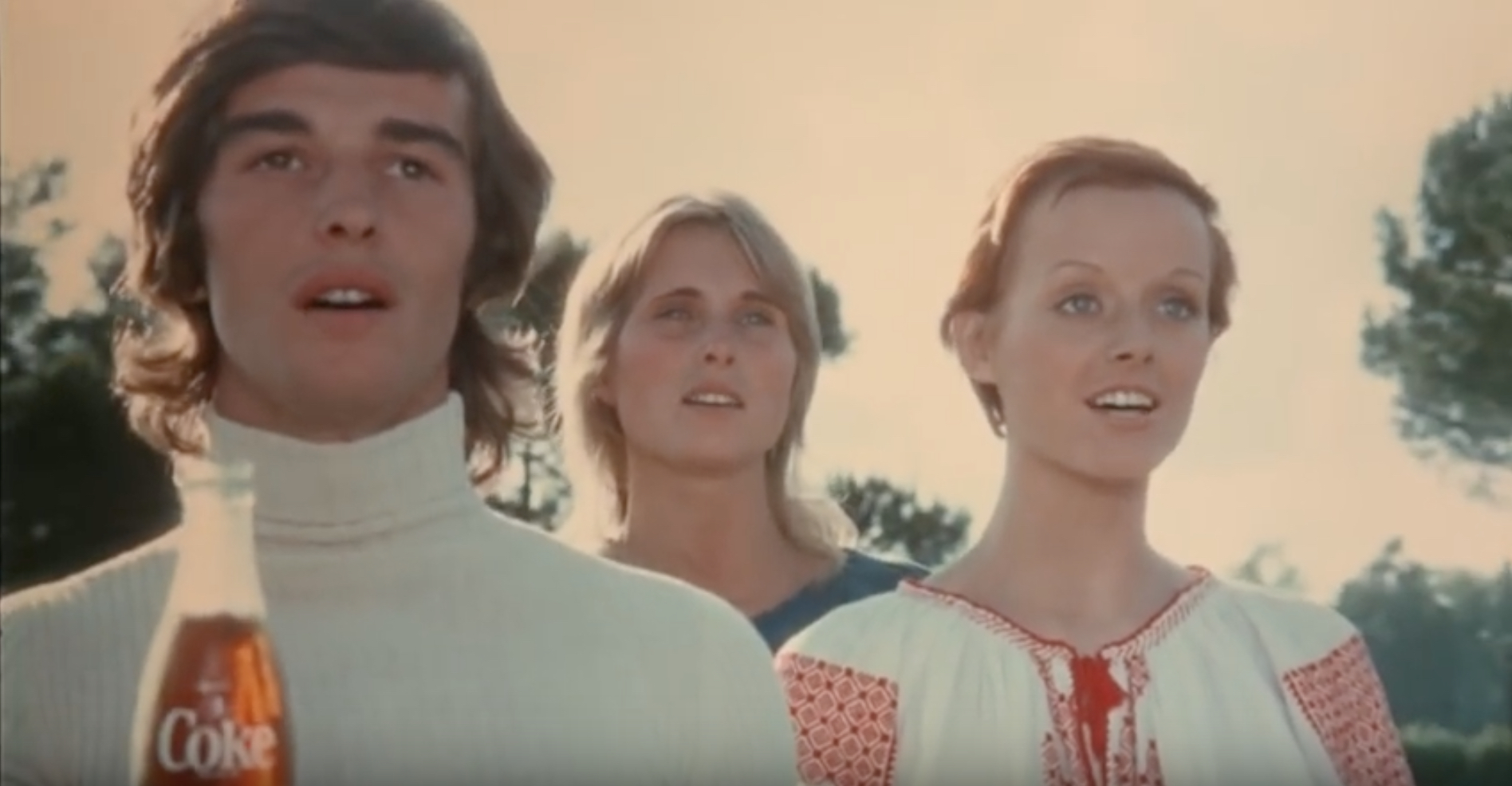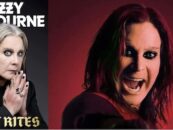‘It’s the Real Thing’: When a Coca-Cola Ad Inspired 2 Hit Singles
by Greg Brodsky
One of Andy Warhol’s iconic Coca-Cola works is an homage to the contour bottle
Coca-Cola connotes so many iconic images and memories that it’s an impossible task to narrow it down to one. Is it its cursive logo, created in 1885 by the bookkeeper of its inventor, biochemist John Pemberton? The shape of its iconic, contour bottle? The red in its logo, known simply as Coca-Cola red?
Still others… Is it the use of the hyphen in its name? (Did you ever notice it before?) Andy Warhol’s iconic Coca-Cola work? Perhaps it’s the seasonal ads coupling Coke with Santa? Or the brand with any number of professional athletes like the legendary ad with Mean Joe Greene? Or its longtime association with American Idol?
For some, it’s the memory of a pair of near-identical hit singles, inspired by a 1971 radio and TV ad.
Bill Backer was a fixture at McCann Erickson, the longtime ad agency and creative director for their Coca-Cola account. As legend has it, he wrote the words “I’d like to buy the world a Coke” on a cocktail napkin and shared it with frequent songwriting partners Roger Cook and Roger Greenaway, and Billy Davis, who produced jingles for McCann clients.
Cook and Greenaway borrowed one of their own compositions, “True Love and Apple Pie,” which had been recorded earlier that year by an artist named Susan Shirley. Though the song made no impact at the time, the pair felt the melody would work for the basis of a jingle for Backer’s new Coke campaign.
English pop group the New Seekers—a recent spinoff of the pop-folk quartet, the Seekers—recorded the jingle, “I’d Like to Teach the World to Sing,” which made its debut as a radio ad for Coke in February 1971.

An early scene in Coca-Cola’s 1971 Hilltop ad
Recognizing the popularity of the radio spot, Backer convinced his bosses at the agency to create a TV version of the jingle. His vision was to emphasize the global power of the brand, with dozens of people of all nationalities lip-syncing the lyrics, while standing on an Italian hilltop outside of Rome. Each of the fresh-scrubbed actors held a contour bottle, emblazoned with the Coca-Cola logo from their own country.
The highly elaborate production cost a reported $250,000, said to be the most expensive TV ad ever, at that time. The 60-second spot, starring the fictional Hilltop Singers, made its debut that July.
The significant TV exposure started lighting up radio station request lines for a song that didn’t really exist. The buzz soon made its way to Madison Avenue and the creative team again went to work. Davis drew from his vast experience as a songwriter (including Jackie Wilson’s “Lonely Teardrops”) and producer (Fontella Bass’ “Rescue Me”). Cook and Greenaway had previously penned such hits as the Fortunes’ “You’ve Got Your Troubles” and Gary Lewis & the Playboys’ “Green Grass.”
The trio co-wrote extra verses for “I’d Like to Teach the World to Sing (in Perfect Harmony)” and are listed as co-writers, with Backer. The clock was ticking, and when the New Seekers—who had recorded the original jingle—weren’t immediately available to record it, producer Al Ham and Davis organized a group of studio singers, dubbing them the Hillside Singers.
The single was released in early November on the Metromedia label and entered the Record World 101-150 singles chart on Nov. 20 at #122. All the while, the New Seekers sensed that they had missed a golden opportunity and rush-released their own superior recording of the full song.
“It’s The Real Thing!,” blared an ad by their label, Elektra, in the Nov. 20 issue of Record World. “Accept no substitute. No one can imitate the flavorful sound of the New Seekers’ new single.”

This ad appeared in the Nov. 20, 1971 issue of Record World
The cola wars were on. But this wasn’t Coke vs. Pepsi. No matter which song charted higher, Coca-Cola would be the winner. “Metromedia has the real hit,” was the headline on the ad for the Hillside Singers’ version.
The following week, both versions debuted on the Record World singles chart. The Hillside Singers, with their one-week head start, bowed at #83. The New Seekers were close behind at #91. Both made steady climbs up the chart. By Dec. 11, the Hillside Singers jumped from #70 to #52; the New Seekers moved from #84 to #69.
On 1971’s final chart, dated Dec. 25, Melanie’s “Brand New Key” was #1. Don McLean’s “American Pie” jumped from #9 to #3. Songs by Sly & the Family Stone, Three Dog Night, Michael Jackson and David Cassidy were also in the Top 10.
The Hillside Singers took a massive jump from #33 to #19. The New Seekers’ version, while still rising, went from #40 to #31.
Then, over the holidays, the New Seekers picked up steam. By the Jan. 15, 1972, issue, their version leapfrogged over the competition, putting them ahead by one position, at #9. The songs were simultaneous Top 10 hits. The New Seekers’ version would ultimately peak at #8. (Rival Billboard had them reach #7, with the Hillside Singers peaking at #13.)
Eight months later, in September 1972, Cook and Greenaway earned a #1 single, which they co-wrote, with Allan Clarke: the Hollies’ “Long Cool Woman (in a Black Dress).”
Backer would be promoted to creative director for all of McCann Erickson. Among his other memorable campaigns was “Tastes great, less filling” for Miller Lite. In 1979, he co-founded the Backer & Spielvogel agency; he was inducted into the Advertising Hall of Fame in 1995. He died in 2016 at age 89.
Watch Backer talk about the legacy of “I’d Like to Buy the World a Coke”
On May 17, 2015, the acclaimed television series Mad Men, about a fictional Madison Avenue ad agency, aired its final episode, set in 1970. It was time to close the book on its well-developed characters. In the series’ final scene, its troubled lead character, creative director Don Draper (played by Jon Hamm), is seen outdoors at a meditation class. As the camera closes in, a smile appears on his face, as he has the inspiration for a new campaign for Coca-Cola.
Iconic Coca-Cola merch is available here.






6 Comments so far
Jump into a conversationPart of the Hillside Singers included brothers Rick and Ron Shaw. They were New Hampshire natives who came up during the commercial folk music resurgence in the early 1960s They also did a stint with the Pozo Seco Singers that also included country singer Don Williams in the ranks. Eventually Rick and Ron fronted their duo, simply known as ‘The Shaw Brothers’ from the 1970s to the early 2000s. After recording an album for RCA they went on to the independent Folk Era label, releasing several albums. The Shaw Brothers retired their act several years ago and brother Ron passed away in 2018. Definitely a group worth checking out.
Interesting bits of music trivia. The New Seekers cover is funny with accept no substitute?
Everybody was cashing in on a good vibe, that’s how it works. Just making mention of Don Mc, Melanie, Three Dog Night, so happy I’ve had the chance to see some of them live!
This is all so confusing. So there were the Hilltop Singers and the Hillside Singers, and then both the latter and the New Seekers had a chart hit with the same song at the same time? Then you mention Melanie (in regard to other charting hits of the time) and I remember that Melanie’s “Look What They’ve Done to My Song, Ma” was a hit for the New Seekers in 1970 as well as for her (B side of her cover of Ruby Tuesday). Makes my head spin.
And at the same time they wouldn’t let the Kinks sing about Coca-Cola on “Lola” and they had to change it to “cherry cola”…
Well, the Kinks, Lola, was first released in England, but soon garnered attention with the Coca-Cola mention, as it is not allowed there, to mention brand names. So, they had to change it to a similar 4 beat cherry cola. Here in the states, there was no such restriction, so we received the originally recorded Coca-Cola.
WABC Musicradio 77 in NYC, at the time, played the “cherry cola” version of Lola. Other (mostly non Top 40) stations played the “Coca-Cola” version.
FWIW, Dylan’s “When I Paint My Masterpiece” (covered by The Band in 1971) also mentioned Coca-Cola by name. Don’t remember it causing any headache.
The 60s had the BEST commercials. I remember so many vividly. Even those Joe Namath commercials were funny.